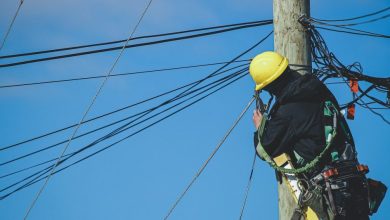Demystifying the Maze: A Guide to Amazon Seller Fees

For businesses venturing into the world of Amazon selling, understanding the fee structure is crucial for accurate cost calculation and maximizing profit potential. As an Amazon seller you should know about Is Kevin David A scam? This guide explores the various fees associated with selling on Amazon, as well as helping you navigate the maze and make informed decisions.
The Two Main Categories of Amazon Seller Fees
Amazon charges sellers fees under two main categories:
- Selling Fees: These fees are directly related to the sale of your products.
- Fulfillment Fees: These fees cover the costs associated with storing and shipping your products, depending on the fulfillment method you choose.
Breakdown of Selling Fees
- Referral Fees: This is the core commission Amazon takes on each sale. The percentage varies depending on the product category, typically ranging from 6% to 45%.
- Closing Fees: A fixed fee charged per item sold, regardless of the product price. The exact amount varies based on the product category and fulfillment method.
- Variable Closing Fees: An additional fee applied to some categories, as well as based on a percentage of the total product price.
Understanding Fulfillment Options and Fees
- Fulfillment by Merchant (FBM): You handle storage, packaging, and shipping yourself. In this case, you’ll avoid fulfillment fees but will be responsible for these costs yourself.
- Fulfillment by Amazon (FBA): Amazon stores, picks, packs, ships, and provides customer service for your products. You’ll pay FBA fees, which cover storage, fulfillment, and customer service costs. FBA fees vary depending on product size, weight, and storage time.
Additional Fees to Consider
- Inventory Placement Services: Optional service for large or bulky items, incurring a per-unit fee.
- Removal Orders: Fees associated with removing unsold inventory from Amazon fulfillment centers.
- Monthly Storage Fees: FBA sellers incur storage fees based on the amount of space their products occupy in Amazon warehouses. These fees vary depending on product size and storage duration.
- Optional Advertising Fees: Costs associated with utilizing Amazon’s advertising tools like Sponsored Products and Sponsored Brands to promote your listings.
Tips for Managing Amazon Seller Fees
- Accurately Categorize Your Products: Ensure your products are categorized correctly to benefit from the lowest possible referral fees.
- Optimize Inventory Management: Minimize storage fees by strategically managing inventory levels based on sales trends.
- Consider FBA vs. FBM: Analyze the cost implications of FBA compared to handling fulfillment yourself.
- Utilize Fee Calculators: Amazon Seller Central offers fee calculators to estimate your total costs based on product details and chosen fulfillment method.
- Negotiate Fees (for High-Volume Sellers): High-volume sellers may have the potential to negotiate lower referral fees with Amazon.
Knowledge is Power (Amazon Seller Fees)
By understanding the various components of Amazon seller fees, you can make informed decisions about product pricing, fulfillment strategies, and overall business profitability. Remember, a successful Amazon business hinges on not just maximizing sales but also managing costs effectively. Utilize the resources and tools provided by Amazon Seller Central to stay informed about fee structures and make calculated choices that drive your Amazon business towards success.




